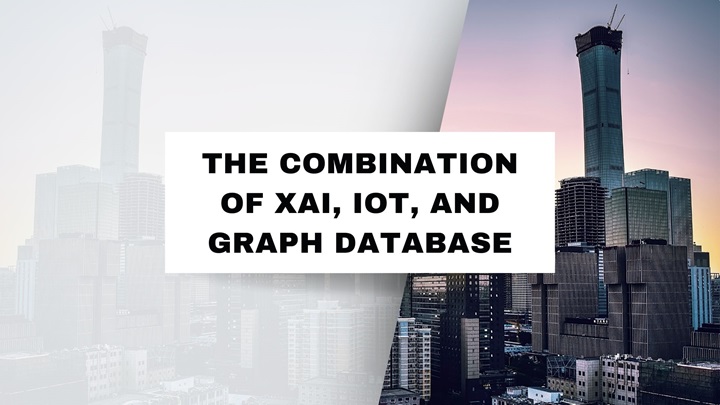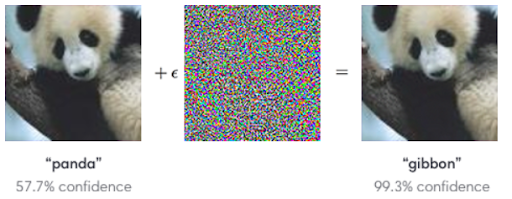
The Combination of XAI, IoT and Graph Database

Background of eXplainable AI(XAI)
AI has a wide range of applications such as autonomous driving, manufacturing, cancer diagnosis, and bank customer response. Since it produces more tangible results than humans, it is expected to replace professional work beyond simple labor in the future.
However, if AI makes a wrong decision, it can be a serious problem. In some cases, even developers and analysts who use it cannot understand the error of AI because the basis and process of deriving results are, in most cases, omitted, or the cause is not immediately known in the event of an error.
That is why there is a need for explainable AI because it can explain the process of derived results, making people able to accept and trust more than regular AI.
limitation of AI
AI can make mistakes like humans. If AI was as perfect as God, there would be no need to ask for an explanation. But what if it makes an error because of one small disturbance? If the answer is set, but the questionable result is derived, can such unpredictable technology be trusted? Let's take a look at the limitations the AI is currently facing.

When looking at Figure 1, anyone can see there is a panda on both sides. However, when AI looked at the picture on the left and determined that it was a panda, it had a low probability of 57.7%. As shown in the image, when a certain number of noises are entered into a panda picture, AI came up with a high probability of 99.3% that this animal was a gibbon, not a panda. This situation is described as an Adversarial Attack[1]. This means adding noise that cannot be distinguished with normal eyes reveals vulnerabilities inherent in AI algorithms.

A team of researchers at the University of Washington found a way to mislead deep learning-based self-driving cars into recognizing a "stop" signal as a "45-mile-per-hour speed limit" signal by putting stickers on stop signs on the road.
The fact that deep learning can be deceived by stickers, noise, or a single pixel can be interpreted as there is still room for AI to develop. As a result, the question of the reliability of AI results has emerged, and interest in XAI has been piqued as one of the ways to solve the issue of responsible AI. As such, many AI companies and research institutes are developing various XAI.
XAI work procedure

Figure 3 illustrates the process of finding a basis for the result of a specific image through XAI. As shown in the figure, not only does it produce results, but it also expresses why they came out and allows people to interpret the results. This can compensate for the 'impossible interpretation of results', which has been a chronic problem of AI.
XAI, IoT, and Graph Database
IoT allows all devices to be managed as one integrated system to make our daily lives more convenient.
However, if a failure occurs during IoT maintenance and management, data from multiple devices must be checked and resolved as fast as possible to find out the cause. During this time, there may be many join computation costs since there are many related devices.
A graph database allows you to convert the interaction between devices into a graph format, helping you to track only the elements associated with the cause of the problem, thereby reducing computational costs.
It is also important to prevent problems before they occur. To this end, XAI enables you to infer the rationale for predictive results and backtrack data through a graph database, so combining graph databases with XAI would be efficient for pre- and post-management in the IoT field
Advantage and use case
The combination of XAI, IoT, and graph data technologies can produce potential use cases as follows.
-
IoT Data Modeling: Graph databases are used to model various data generated in IoT environments. For example, data collected by sensors, relationships between devices, and user behavior patterns are represented by nodes and edges in the graph database. This graph structure allows you to visualize and analyze complex relationships in IoT networks.
-
IoT Data Analysis: Graph databases help you analyze data generated by IoT effectively. Graph-based queries and analysis algorithms can be used to extract and analyze the state of a specific sensor, the relationship of influence between devices, and the pattern of event occurrence
-
Building an XAI interpretation Model: Graph data technology can be used to build an explanatory model for XAI. The explanatory model serves to transparently explain the decision-making process of the AI model. A graph database visually represents the relationship between the inputs and outputs of an AI model, which allows you to visualize the rationale and influencing factors of AI decisions.
-
IoT and XAI system integration: Graph databases facilitate integration between IoT and XAI systems. By storing and managing IoT data and explanatory information from AI models in a graph database, we can provide understanding and verification of AI decisions in IoT environments. This improves the transparency of the AI system and enables the detection and action of errors, biases, or suspicious decisions.
Graph databases graph communication patterns between devices, input-output relationships in AI models, activation patterns in explanatory models, and more to help stakeholders in decision-making understand and participate.
In this way, XAI, IoT, and graph data technologies work complementary to each other, improving the understanding of the transparency, reliability, and decision-making processes of AI systems in IoT environments. Graph data technology is a powerful tool for effectively expressing and analyzing complex relationships and interactions, and serves to strengthen the correlation between XAI and IoT.
Conclusion
In this article, we looked at the benefits of combining IoT, graph databases, and XAI, which can be applied to data collection technologies. Graph databases have the advantage of being able to extract and manage device data related to specific events by converting interactions between devices into graph form in the context of ongoing management and maintenance in the IoT field.
The advantages of this graph database can be an attractive marketing factor for IoT companies. Graph databases enable IoT companies to provide efficient solutions for data collection and management. This increases the reliability of IoT systems and can reduce the cost and time of failure response and maintenance.
In addition, the use of graph databases plays an important role in the field of prediction. Combined with XAI, IoT companies can proactively predict problems and provide solutions to prevent them. This helps to provide customers with better service and reliable products.
Therefore, IoT systems utilizing graph databases can be marketed as innovative solutions with a competitive edge, and customers can be trusted by emphasizing reliability and predictive capabilities.